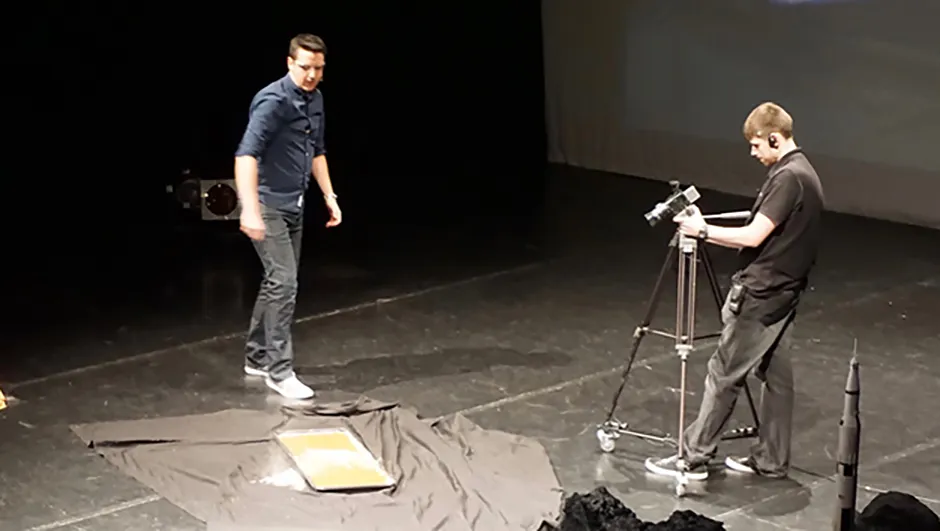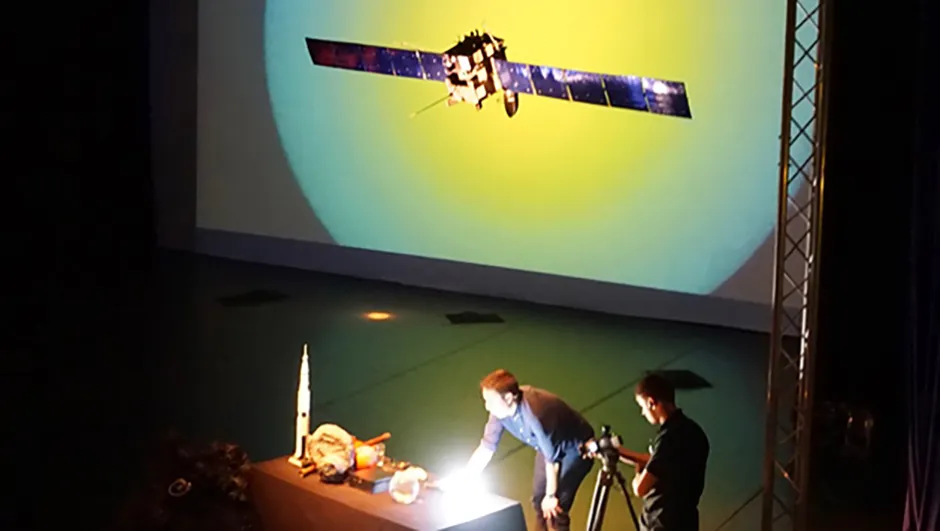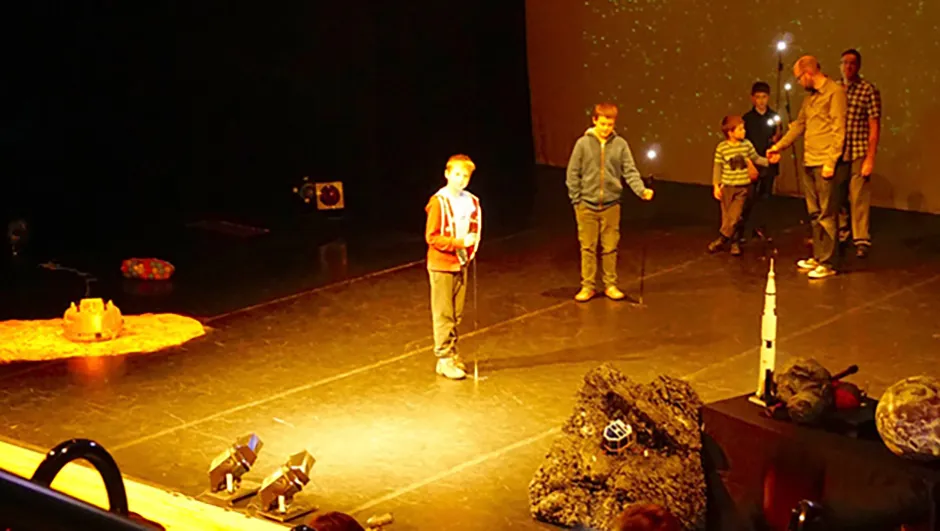The one-man show presented by Will Gater told the story of how the planets in our Solar System became more than just lumps of rock orbiting a young star, how they became the dynamic worlds we know today, and succeeded with style.
The packed auditorium at the Tacchi-Morris Arts Centre in Somerset was entertained from the outset by the aptly chosen images and videos in the multimedia showreel, the cast of scale models that occupied the stage and the frequent demos – many performed with the help of audience members.

Starting with how the Solar System was perceived in pre-Galilean times, the show looked at the conditions on all eight planets and the missions that have uncovered their secrets throughout the Space Age.
Describing our own planet, Gater memorably demonstrated the scattering that makes Earth's atmosphere blue using two goldfish bowls both full of water, one of which was made cloudy with a few drops of milk.
Shining a torch through the clear bowl, the beam came straight through.
But when the torch was shone through the milky bowl, it lit up blue just like our atmosphere, while the torch itself appeared yellow just like our Sun.

The reason; the molecules of milk suspended in the water scatter the blue wavelengths of light, leaving the yellower wavelengths to travel straight to our eyes directly from the torch.
There was a sense of fun in the room as eight audience members helped demo the size of the Solar System at a scale to fit the theatre (the Sun being the size of a barely-visible yellow ball bearing), as a volunteer from the third row helped show why we only see one side of the Moon from Earth, and as Gater gamely demonstrated the gas giants' gravity with 3m of black spandex stretched into a circle that he set marbles racing round.

He almost got one marble to orbit another as they both orbited the bigger marble at the centre of the spandex (showing how the Moon orbits the Earth as both bodies orbit the Sun), but when the second attempt didn't come off we were treated to a video of it that had been made earlier.
The presenter's engaging and energetic delivery, ability to choose the right facts to capture the attention and clear skill at model making kept the mums, dads, kids and amateur astronomers in the audience entertained throughout the two-hour show.
All came away entertained and knowing more about the planetary system they live in – including how far apart you'd need to place two potatoes to demonstrate the average distance between two asteroids.
